Syphilis is a thing of the past? Wrong. The number of syphilis infections worldwide has increased drastically in recent years. 4,309 cases were reported in Germany in 2007, 10 years later, it had reached 7,476. But why?
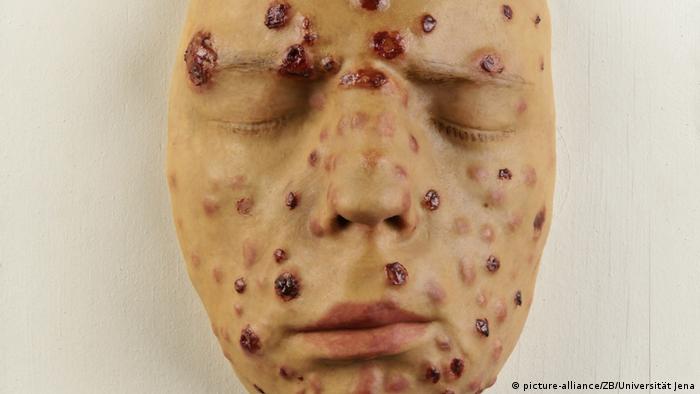
Berlin today, New York or Bangkok tomorrow and a different bedmate at each stop over. And with that, the chance of getting infected with syphilis also increases.
“Safe sex” – the mantra of the 1980s following the outbreak of the HIV pandemic – is no longer practiced as rigorously as it was back then. Young people today didn’t experience the panic caused by the first cases of HIV and many of them lack the essential information needed to keep them safe sexually.
How do you know you’re infected?
Not everyone presents with the same symptoms. In many cases, an ulcer develops at the site where the bacteria entered the body. It can range in size from being the diameter of a pimple, but can be as big as one centimeter (0.3 inches).
Read more: Syphilis on the rise in Germany
In men, the ulcer occurs on the penis, in women it can be in the vagina or form on the labia. It can also develop in the anal area for both men and women. “Some people get an ulcer on their lips or tongue. But the bacteria can also be on your finger,” explains Norbert Brockmeyer from the Center for Sexual Health and Medicine in Bochum, Germany. “It is the first stage of syphilis, the primary effect.”
What appears by itself will fix itself
Many people often misjudge these primary symptoms, believing they will fix themselves. And at first, this is often the case. After approximately three weeks the ulcer usually heals without any medical intervention.
“An undefined period of time later, a skin rash appears because the pathogens have spread throughout the body via the bloodstream,” says Brockmeyer. “At this point, changes to the skin occur all over the body. Some [sores] are knobby, some are scaly, and others are reddish.”
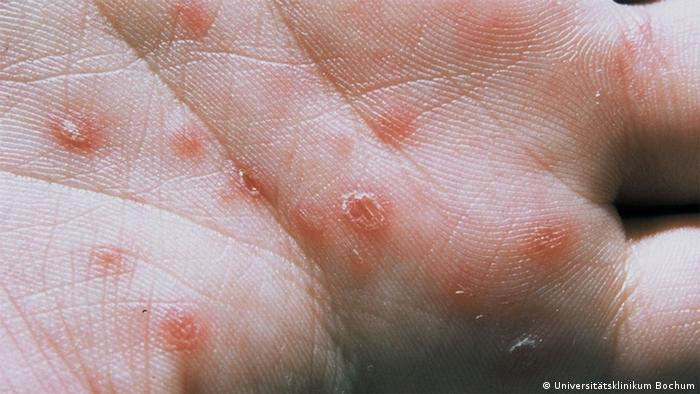
Skin rashes occur during the second stage of syphilis
These rashes usually develop on the soles of the feet or the palms of the hands. “They don’t itch and are easily distinguishable from an allergic rash,” the physician adds. This is the second stage of the disease.
In the tertiary stage, not only the internal organs, respiratory system, stomach and liver are affected, but also the muscles and bones. Things turn really bad when a syphilitic node forms at the aorta, the main artery. It can cause an aortic aneurysm, which is life-threatening.
Read more: HIV self test: “Get yourself tested, live better, live longer”
A horrible thought
Syphilis is a systemic disease. In its fourth stage it can have further irreversible effects, including inflammation of the heart, paralysis, a decrease in liver function, and changes in the brain.
The disease can also affect the eyes, and about 25 percent of patients suffer from chronic encephalitis, an inflammation of the brain. “The neural pathways and the cells themselves are damaged,” Brockmeyer explains. “The mental abilities of many renowned personalities are thought to have been altered by syphilis in this way”. These include Ludwig van Beethoven and Friedrich Nietzsche, as well as Catherine the Great of Russia.

German composer Ludwig van Beethoven is said to have lost his hearing due to syphilis
Syphilis has been called the “monkey among the diseases” — a monkey can mimic many things. It is also considered a “chameleon of medicine.” And at the end of the 19th century, the famous Canadian physician and pioneer Sir William Osler even coined the phrase: “Anyone who is familiar with syphilis knows medicine.”
How do you get rid of it?
Almost all venereal diseases are taboo. From the moment it became known that syphilis is transmitted through sexual intercourse, it became morally unacceptable and offensive to speak of it. Even today, this has not changed.
Read more: Gonorrhea makes a comeback as awareness of sexually transmitted infections drops
HIV, on the other hand, is now more accepted within society than syphilis. “When I ask people with an HIV infection if they want to come to a discussion on television, many of them say ‘Yes.’ But when I ask people with syphilis, almost 100 percent say ‘No,'” describes Brockmeyer.
“If the pathogen becomes resistant to penicillin, we will have a problem that can only be solved with great effort. So now is the time to develop and test alternative antibiotics.”
Biological warfare
There are many theories about how syphilis got to Europe. One of them says Columbus and his men brought it back to Spain in 1492 after their discovery of America. The infection traveled through Italy and France, and soon, syphilis snowballed into an epidemic. From Europe, the “French disease” — as it was also called then — spread to Asia.
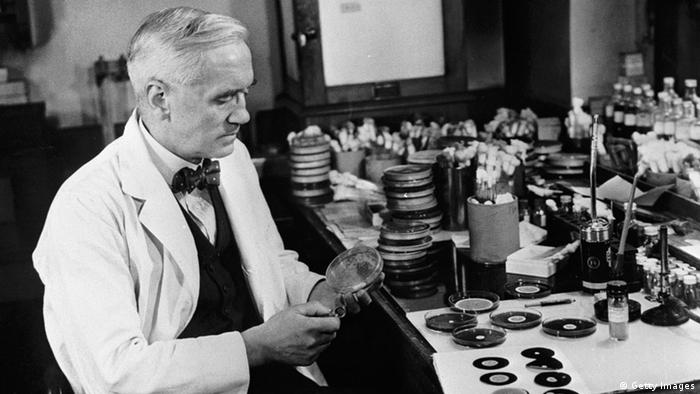
Alexander Fleming discovered penicillin in 1928
It soon became clear the disease is an infection; that it is transmittable. At the time, camp followers — women who accompanied the army during war — also served as prostitutes. “If it was known that some women had syphilis, they were often sent to the enemy as a ‘love message.'”
Wars have been won and lost as a result of syphilis; after many soldiers became infected and were sooner or later incapacitated by the venereal disease. So, “even many centuries ago ‘biological warfare’ existed,” says Brockmeyer.
Nothing works without money
Today, syphilis has somewhat been forgotten. That’s what makes it so dangerous. After all, it hasn’t disappeared. Education, counselling, diagnostics and therapy are the most important measures to take in order to get a better grip on this threatening infectious disease.
Read more: 90 years after penicillin: Artilysin could replace antibiotics
The best protection is the condom. This applies to all sexually transmitted diseases, including HIV. Research and education remain necessary. “The dissemination of information is therefore a top priority at the Center for Sexual Health and Medicine, but the efforts must be continued,” Norbert Brockmeyer emphasizes.
For this purpose, money is essential. “We are still missing a long-term perspective. We need the money now to see success in five years. We have to use every possible protection against various sexually transmitted infections. The vaccination against the human papilloma virus, medication against an HIV infection, preventive medical examinations.” So that not only the numbers of syphilis infections are lowered, but the infection rates of all sexually transmitted diseases are steadily reduced.
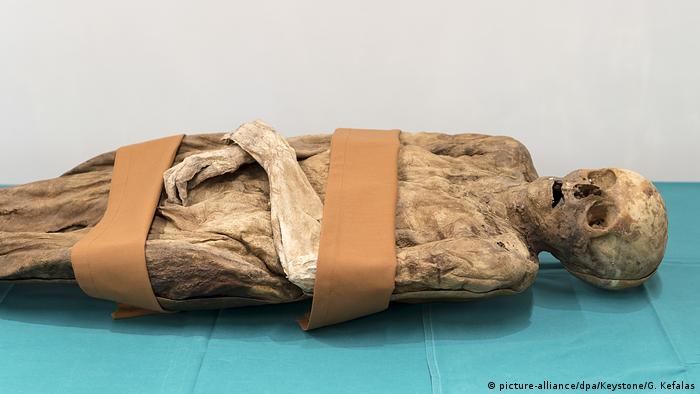
Decades-old mystery
The body was found in 1975, during the renovation of the Barfüsser Church in Basel. She was buried in front of the church’s altar; her remains also showed she was well-fed and elegantly dressed, indicating she was a wealthy woman. There was, however, no gravestone, so her identity remained a mystery.

SYPHILIS-RIDDEN SWISS MUMMY IDENTIFIED AS BORIS JOHNSON’S ANCESTOR
Treated for syphilis
One of the reasons the body was so well-preserved is that it contained a high level of mercury, which was often used as a treatment for syphilis from the late 15th to 19th century. Problematically, the mercury treatment would often poison and kill patients instead of healing them.
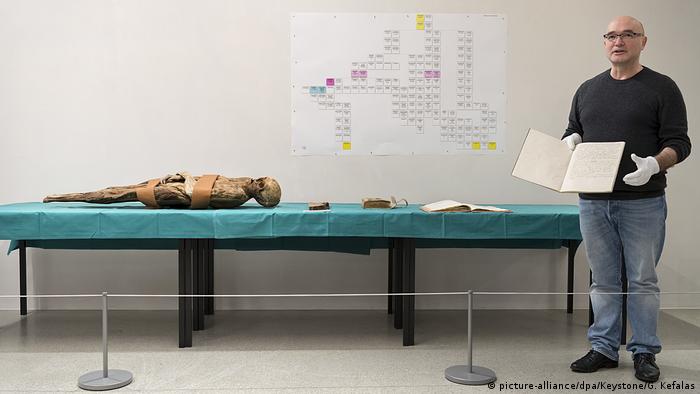
SYPHILIS-RIDDEN SWISS MUMMY IDENTIFIED AS BORIS JOHNSON’S ANCESTOR
New information from mummy’s toe
A team of researchers led by experts from Basel’s Natural History Museum recently undertook new tests to identify the body. DNA was extracted from the mummy’s toe. The results of their research, revealed on Swiss television this week, determined that the wealthy woman was Anna Catharina Bischoff, who died in 1787.

SYPHILIS-RIDDEN SWISS MUMMY IDENTIFIED AS BORIS JOHNSON’S ANCESTOR
Family connection
In a surprise, researchers also determined Anna Catharina Bischoff was a distant ancestor of British Foreign Secretary Boris Johnson. As historical records show, Bischoff’s daughter married Christian Hubert Baron Pfeffel von Kriegelstein, and the family line leads down to Johnson — or Alexander Boris de Pfeffel Johnson, as he is officially named.

‘Late great grand ‘mummy”
The foreign secretary’s father, author Stanley Johnson, said he was “totally thrilled” by the discovery. Boris Johnson himself reacted with a smile to the news reconnecting him with one of his 512 great-great-great-great-great-great-great-grandparents: “Very excited to hear about my late great grand ‘mummy’ — a pioneer in sexual health care. Very proud,” he wrote on Twitter.
[Disclaimer]









